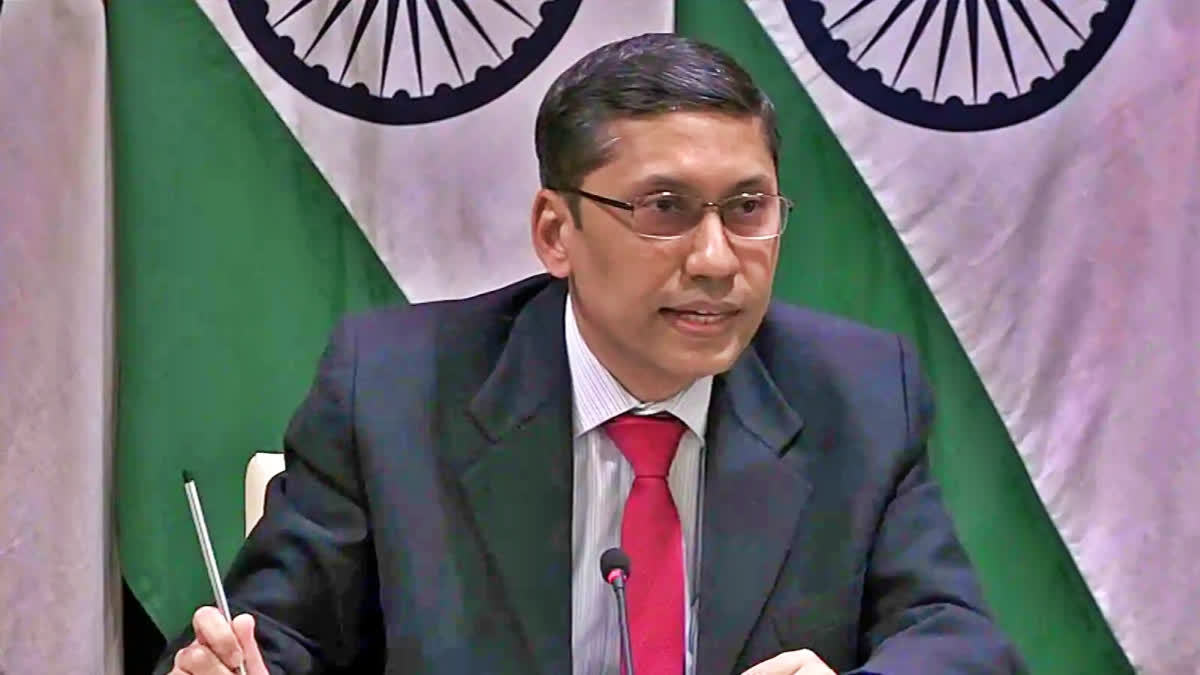New Delhi: India on Tuesday vehemently rejected China's claim on the territory of Arunachal Pradesh in its newly released map. This comes a day after China released a new map laying territorial claim on Arunachal Pradesh, Aksai Chin, Taiwan, and disputed South China Sea regions, which has once again raised diplomatic concerns and rekindled existing disputes.
In response to a media query over the matter, Ministry of External Affairs spokesperson Arindam Bagchi said, "We have today lodged a strong protest through diplomatic channels with the Chinese side on the so-called 2023 "standard map” of China that lays claim to India’s territory". "We reject these claims as they have no basis. Such steps by the Chinese side only complicate the resolution of the boundary question”, Bagchi added.
Speaking over the row, Srikanth Kondapalli, a China expert and the Dean of the School of International Studies and professor of China studies at Jawaharlal Nehru University, New Delhi, told ETV Bharat that since Xi Jinping took over in 2012, his emphasis has been on "core interests" including sovereignty issues. "A land border law was passed two years ago to consolidate China's claims", Kondapalli said.
"Even in Russia, Kazakhstan, and other countries, China is doing similar cartographic aggressions. All this suggests India needs to be proactive in its policy and consolidate its control over far-flung areas, develop infrastructure, and mobilize forces. In addition, India needs to review the one-China policy", Kondapali explained.
Such an attempt by China comes just a few days before India is set to host the G20 summit in the national capital, which will see the participation of more than 25 world leaders and other guest countries. All eyes are on India's position in the global arena and the relations India maintains with all its neighbours in the global south.
“This map is compiled based on the drawing method of national boundaries of China and various countries in the world," China's Global Times said in a post on X (formerly Twitter). The particular significance of the new map is the inclusion of Arunachal Pradesh and Aksai Chin - both areas that have long been subject to conflicting claims between China and India.
India has been steadfast in maintaining its stance that Arunachal is and will always remain an integral part of India, despite China's repeated attempt to claim the Indian territory as South Tibet. This time what's different is China's inclusion of the controversial nine-dash line, which asserts a substantial portion of the South China Sea as Chinese territory.
Also read: New China 'standard map' reflects Beijing’s defiance of UNCLOS



